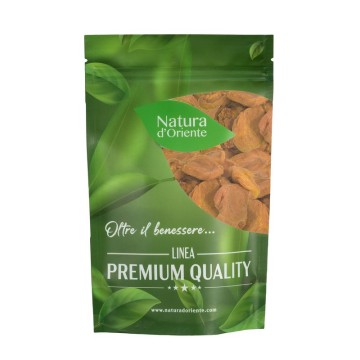Dehydrated hibiscus
Dried hibiscus usually refers to petals, calyxes and other parts of dried Hibiscus flowers, which are often used to make tea, syrup or jam. These flowers are edible, cooked or raw, and in the dehydrated version of the hibiscus they make a great snack.
The dried hibiscus contains vitamin C, various minerals, some organic acids and other substances such as polysaccharides and flavonoids which give them their typical deep red color.
Dehydrated hibiscus: properties and benefits
The hibiscus flower, thanks to the nutrients we mentioned, boasts a wide range of health benefits. It has been used since ancient times for its medicinal properties, and especially in the form of tea.
It was known for protecting the cardiovascular system, and in modern times the properties of hibiscus are studied which can reduce the amount of harmful cholesterol in the body, and blood sugar levels and prevent diabetes.
In recent times, the value of dehydrated hibiscus has been found to be excellent, due to the concentrate of the properties that once were obtained from tea.
Many benefits of hibiscus include regularity of intestinal transit , having this flower with purgative and diuretic properties when needed.
It helps in the drainage of body fluids, and therefore also supports the functionality of the urinary tract, while also helping against constipation.
Hibiscus is also known for its possible support in countering hypertension (high blood pressure) and cholesterol levels in the blood. The flavonoid compounds would be responsible for these good reactions, in particular the anthocyanins contained in hibiscus flowers. Anthocyanins and flavonoids such as sabdaretin, gossypetin and ibiscetin, could prevent the oxidation of low-density lipoproteins, which are associated with heart disease.
These antioxidant compounds are also useful for the balance of the nervous system.
In terms of antioxidants, in addition to flavonoids, this dehydrated flower is considered a source of vitamin C, which can help the immune system and skin well-being.
There are, thanks to these elements, some benefits of hibiscus for the hair. For the natural treatment of the hair with hibiscus, the dried flowers can be ground into a fine powder and mixed with a little water to be applied to the scalp. An excellent compress against hair loss and their prematurely graying. In the past, hibiscus was also used to prevent or ward off the appearance of lice.
In recent times, the beneficial effect of hibiscus on some symptoms affecting women, such as hot flashes in menopause, has been studied.
For women's health, hibiscus contains all the antioxidants essential to fight the signs of aging and avoid annoying hormonal imbalances such as hot flashes. In addition, hibiscus flowers have been used in tea for centuries to relieve menstrual cramps, thereby reducing some symptoms of menstruation.
Origins and History of cultivation
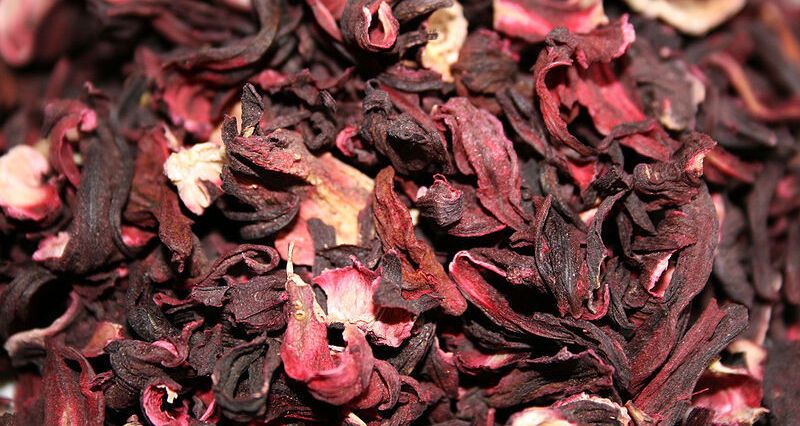 The hibiscus, that is the Hibiscus plant, belongs to the Malvaceae family, is native to the tropical areas of the Asian continent and the islands of the Pacific Ocean. From there, it is widespread and cultivated, for ornamental purposes, throughout Europe and North America, and today there are over 300 different species.
The hibiscus, that is the Hibiscus plant, belongs to the Malvaceae family, is native to the tropical areas of the Asian continent and the islands of the Pacific Ocean. From there, it is widespread and cultivated, for ornamental purposes, throughout Europe and North America, and today there are over 300 different species.
It derives from the Greek word hibiskos, which means mallow, and was attributed to the plant by Dioscorides, one of the most famous Roman doctors, in the 1st century BC. In more recent times, numerous specimens of Hibiscus were sent from Asia Minor to Holland from the court of Constantinople, through the botanist and ambassador Ghiselin de Busbecq (16th century).
Among the countries in which it has had enormous diffusion and success, there are Jamaica - where the hibiscus elatus is the national tree, and the Polynesian and Pacific islands.
The Solomon Islands, near New Guinea, are famous for the presence of the hibiscus taliaceus, from which fibers and leaves are obtained to create the typical local dance skirts.
On the island of Tahiti, hibiscus flowers are traditionally used to adorn the hair of young girls, while boys use them to signal their sentimental state: the flower on the right ear means they are engaged, and on the left ear that are free. In other locations, the hibiscus is worn as a sign of marital fidelity by women, and these customs can also be found in the paintings of Gauguin, a painter who created many sublime works on the beauty of
and hibiscus flowers and the Tahitian society.
The hibiscus flower is linked in the language of flowers to beauty and affection, but also at the level of traditional medicine it has been used for its benefits, especially for a tea defined in African areas karkadè . In the Hindu religion it is also used for divine interpretations.
It represents the national flower of Haiti, South Korea and Malaysia - albeit with different hibiscus varieties (Hibiscus syriacus and Hibiscus Rosa-Sinensis).
In terms of health benefits, in ancient times it was used against fever, colds, constipation, to treat nervous and heart diseases, for liver purification. The most widespread use was as a diuretic, and as a medicine in the treatment of menopause.
Today the flower is used a lot for the creation of teas and herbal teas, and as a dehydrated hibiscus.
Plant and Fruit
The Hibiscus plant branches out into numerous species of herbs, shrubs and trees, all belonging to the mallow family (Malvaceae). These plants are native to the warm temperate and tropical regions, cultivated both as ornamental plants for showy flowers, and as fiber plants.
Hibiscus flowers, used by many cultures for herbal teas or to create dehydrated hibiscus, are found singly or in clusters, and in many species the flowers only last a day.
Among the main species is the tropical Chinese hibiscus, or Chinese rose (Hibiscus rosa-sinensis), which can reach a height of 4.5 meters, and is grown for its large bell-shaped flowers red, white, yellow or orange. The East African hibiscus (H. schizopetalus), is a drooping shrub with red petals, usually grown indoors.
Other members of the genus Hibiscus include the fiber plants mahoe (H. tiliaceus), kenaf (H. cannabinus), and little rose (Hibiscus sabdariffa), rose of Sharon (H. syriacus), and many flowering plants known with the common name of mallow.
In general, the plants that grow in areas where the climate is mild never reach significant dimensions, while the plants that grow in their original habitats can reach very significant heights, up to 25 meters.
The variety used in the kitchen is that of Hibiscus sabdariffa from which the karkadé is obtained for herbal teas and jams, as well as for drying, for the purpose of creating dehydrated hibiscus flowers. The fruits of Hibiscus esculentus are used as a vegetable, indicated in various places with the names of Gombo, Okra or Bamja.
The Hibiscus cannabinus variety is used in the paper industry because it is rich in cellulose.
Nutritional values of dehydrated hibiscus
Hibiscus flower is rich in antioxidants, polyphenols, and provides vitamins and minerals. On an energy level, the nutritional values of dried hibiscus have 357 calories per 100 grams. It has zero fat (about 0.3%), Hibiscus gives about 51 mg of magnesium, calcium with about 200 mg / 100 g, 1.5% iron, phosphorus (37 mg) and potassium with values of about 200 mg / 100 g.
In terms of vitamins, hibiscus gives a fair amount of vitamin C (about 12 mg / 100 g).
For a wellness snack, hibiscus represents a concentrate of antioxidants, while as a sports snack, it gives sugars useful for those who practice sports.
How to consume or use dehydrated hibiscus in the kitchen
Dried hibiscus offers several possibilities to incorporate its health benefits into your diet. You can eat dried hibiscus flowers as a snack, add them to your favorite meal to give it more flavor, or add it to your fruit salad as a dessert.
In the dehydrated hibiscus version it can be easily consumed as a wellness snack, or added as a top decoration for muffins, cakes, cupcakes, ice creams , sorbets and frozen desserts.
Perfect as an ingredient for breakfast, hibiscus can be used in cereals, dried fruit mixes, or in yogurt and smoothies . In some recipes, hibiscus can be combined with vegetables and white meats, to create a particular aroma.
In cooking, however, flowers are usually used more for garnish than for flavor, but dried hibiscus flower can lend flavor to many recipes. In addition, dried hibiscus can be inserted into teas and herbal teas to flavor them, and to release the tart, almost blueberry flavor and a deep red-violet color.
Dehydrated hibiscus: side effects and contraindications
While hibiscus has many surprising properties for well-being, there are some situations where it would be best to moderate its consumption to a minimum, or avoid it - perhaps by discussing it with your doctor before consuming it.
If you're pregnant, it's pos

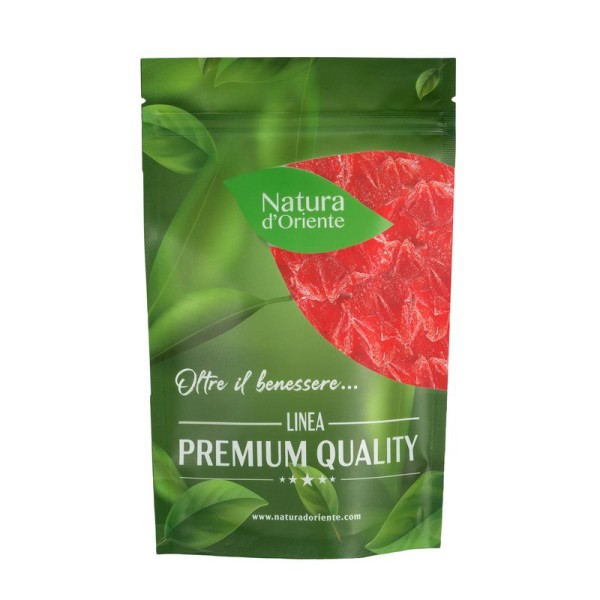









 No reward points for this product.
No reward points for this product.
 The hibiscus, that is the Hibiscus plant, belongs to the Malvaceae family, is native to the tropical areas of the Asian continent and the islands of the Pacific Ocean. From there, it is widespread and cultivated, for ornamental purposes, throughout Europe and North America, and today there are over 300 different species.
The hibiscus, that is the Hibiscus plant, belongs to the Malvaceae family, is native to the tropical areas of the Asian continent and the islands of the Pacific Ocean. From there, it is widespread and cultivated, for ornamental purposes, throughout Europe and North America, and today there are over 300 different species.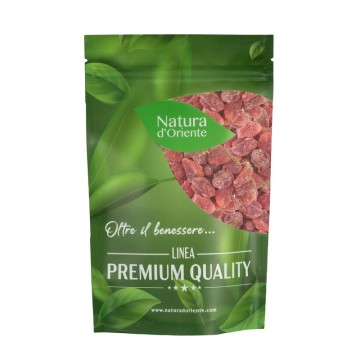
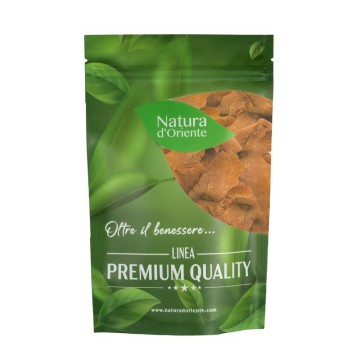


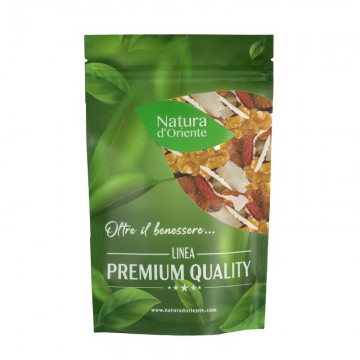

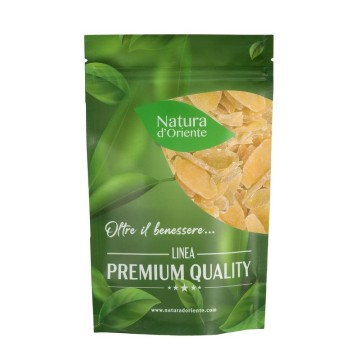

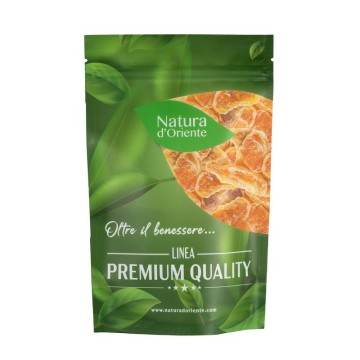
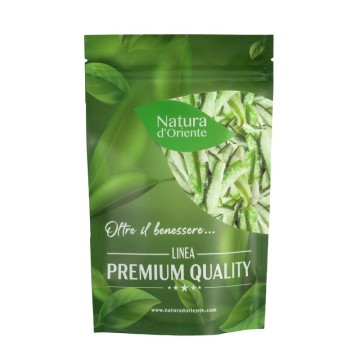
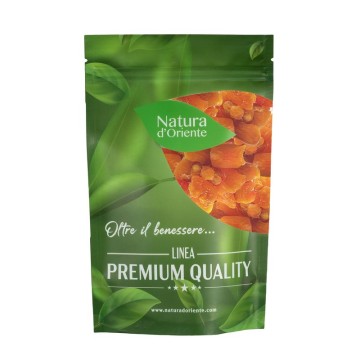
![Natural dehydrated grapefruit without added sugar [NATURADORIENTE]](https://www.naturadoriente.com/10190-home_default/pompelmo-naturale-disidratato-senza-aggiunta-di-zucchero.jpg)

